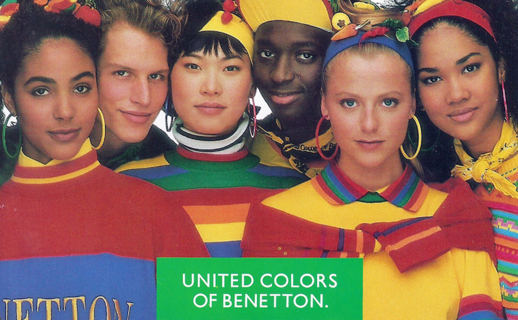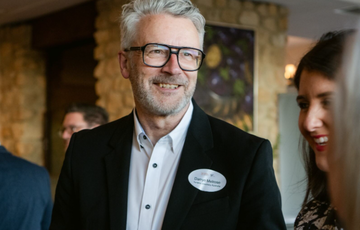MDS Lecturer Sarah Baker discusses why design needs more than diversity
Media Design School's very own Sarah Baker, Senior Lecturer for Postgraduate Programmes and Research Co-Ordinator of MDS, has recently published an article discussing why design needs more than diversity. Read below for her interesting discussion of the topic:
WHY DESIGN NEEDS MORE THAN DIVERSITY
BY SARAH ELSIE BAKER
Seven years ago when I arrived in Aotearoa to teach design I expected to feel out of place. I was eager to learn how to make my teaching appropriate to the new cultural landscape that would become my home. Instead, what I encountered was a design education that was strikingly similar to the United Kingdom and used the same examples of ‘good design’; a design canon that I would get students to critique by thinking about why objects created by women were often ignored, categorised as craft or dismissed as kitsch.
Luckily, since then things have started to change. Educational institutions have begun to recognise the importance of design approaches that challenge Eurocentric and patriarchal ideals. Businesses have also started to acknowledge the value of including diverse groups of designers and users in the design process. However, as the list of ‘Black Pin’ prize winners at the Best Design Awards demonstrates, there is still a long way to go.
In the journey towards a more egalitarian future, we need to look to established debates about diversity and identity in the fields of feminism, queer theory and critical race studies. For example, feminists of colour have long pointed to the problems with the language of diversity because it obscures more critical ideas such as social justice and equality.[1]
The happy smiling faces of a diverse organisation (i.e. the Benetton model of diversity) have commercial value and often conceal the tension between employees from diverse backgrounds and monolithic institutional agendas.
In organisational contexts, paying lip-service to diversity often becomes a way of controlling dissent or conflict. Histories of violence and repression are emptied out and replaced by difference for difference’s sake. The happy smiling faces of a diverse organisation (i.e. the Benetton model of diversity) have commercial value and often conceal the tension between employees from diverse backgrounds and monolithic institutional agendas.
Discussions regarding diversity also tend to assume that identity is fixed and knowable. Just because someone inhabits a particular body, does not necessarily mean that they act in a certain way. For example, not all women are nurturing, a quality traditionally (and problematically) coded as female. Thus, rather than viewing experience as a foundation for knowledge (i.e. based on a fixed notion of what it is to be a woman), experience should be thought of as informing positions that are continually evolving. This means that it is possible for a white cis-gendered man to offer a diverse perspective if he has had a diversity of experience. For instance, a man who has worked closely with vulnerable women for many years (and reflected on his position of power) would surely have a lot to offer in a discussion of design and discrimination. Of course, I’m in no way suggesting that design studios and boardrooms full of white men are adequate.
One of the first steps in this process is to interrogate the standards of ‘good design’, upheld by designers, educators and industry bodies; do they continue to exclude a diversity of approaches and aesthetics?
Based on experience it is more likely that a female designer would better understand the complexities of sexual discrimination, and that a Māori designer would have richer knowledge of tikanga Māori. However, diversity alone is not enough to democratise design: new values and methods are also vital.
Is design work that falls outside the established canon being judged as not ‘serious’ enough to be worthy of awards? One of the first steps in this process is to interrogate the standards of ‘good design’, upheld by designers, educators and industry bodies; do they continue to exclude a diversity of approaches and aesthetics? Would a young designer, drawing on their own culture and experience, be forced to align themselves with the modernist aesthetic tradition or be required to justify their work by highlighting similarities to western design approaches? Is design work that falls outside the established canon being judged as not ‘serious’ enough to be worthy of awards?
Of course, this interrogation would cause us to reflect on our own standards of ‘good taste’ and might even include a (perhaps uncomfortable) revaluing of work considered ugly, over-the-top, vernacular, outdated, or frivolous. It might also involve the creation of new judgement criteria, for example; does the work challenge gender norms or cultural stereotypes? Any move towards the opening up of design values would also need to listen to, and include, users and their communities. Since the 1980s, design has increasingly become dominated by user-centred methods such as design thinking, so at first glance, this does not seem revolutionary.
Once an understanding of others’ experiences is ascertained, there is a tendency to stop asking, listening and learning.
However, empathy in the design thinking process is often short-lived and discarded once a solution is found. It is a means to a market. Once an understanding of others’ experiences is ascertained, there is a tendency to stop asking, listening and learning.
“What is required is design that cares as well as empathises.”
Empathy also tends to focus on understanding human experience and if we truly want inclusive design practice then we have to consider the needs of all living things and the environments they inhabit.
What is required is design that cares as well as empathises. People, animals and environments can all be cared for, and to take care of something involves ongoing action. Thus, a more caring design practice would mean a sensitive ongoing engagement with local contexts (past, present and future) and a thoughtfulness about the life of the things we create. Of course, it is quite a challenge to imagine how a design approach focused on care would work in the fast-paced culture of neoliberalism, but the fact that it doesn’t fit is precisely the point: we need new ways of doing things if we want something other than a Benetton model of diversity.
[1]For example, see Nirwal Puwar, (2004) Space Invaders: Race, Gender and Bodies Out of Place, and Sara Ahmed (2012) On Being Included: Racism and Diversity in Institutional Life, for comprehensive academic discussions of these issues.
Sarah Elsie Baker / Senior Lecturer (Master of Design), Media Design School, Tāmaki Makaurau / writer, researcher, experience designer



